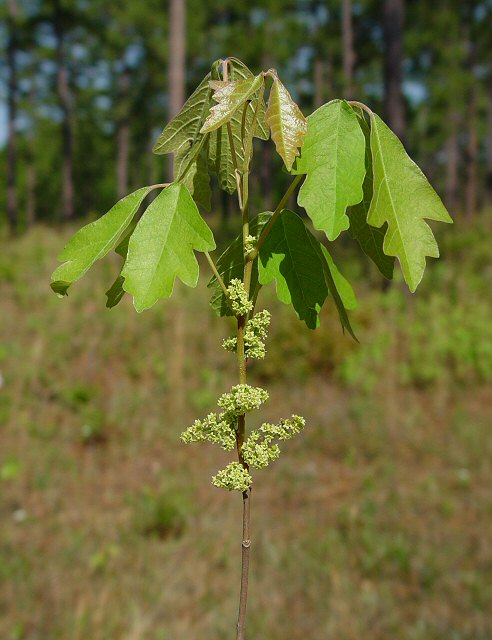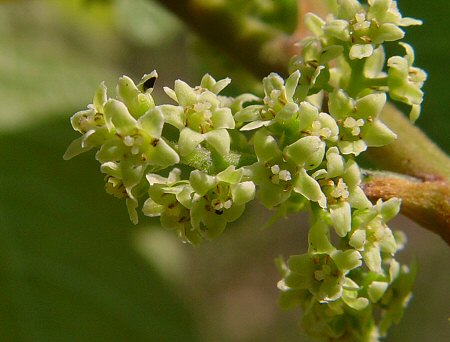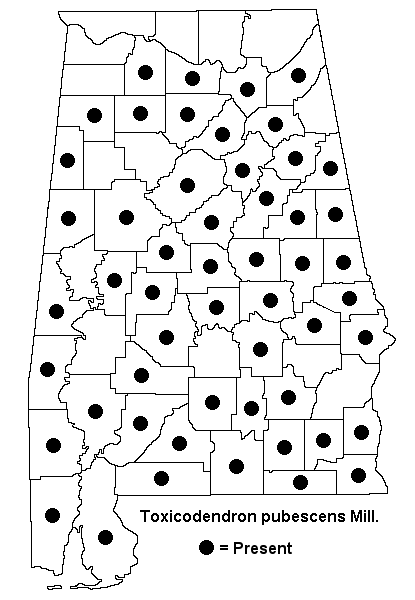Toxicodendron pubescens Plant Identification (Flower, Leaf, Care, Uses)

Family – Anacardiaceae
Stems:
N/A
Leaves:
 Leaflet.
Leaflet.
Inflorescence:
N/A
Flowers:

Flowering – April – May.
Habitat – Sandhills, dry hammocks, thickets, old fields.
Origin – Native to North America.
Other information – This species can be found throughout most of Alabama but is apparently absent from the most northern counties. The plant can be identified by its trifoliolate leaves which have leaflets shaped like oak leaves. This species grows to about 60cm tall and spreads by rhizomes. It is not nearly as aggressive as the closely related T. radicans (L.) Kuntze which is known as Poison Ivy. Both plants cause most people to have at least some type of allergic reaction if touched. The oils in the plants are water soluble and can be removed within twenty minutes of exposure with no ill effects.
The genus name Toxicodendron derives from the Latin “toxic” meaning “a poison, arrow poison” and the Greek “dendr(o)(on)” meaning “a tree” referring to the woody nature of the plant and its allergens.
The species epithet pubescens derives from the Latin “pubesc” meaning “downy” referring to the hairiness of the leaves.
Alabama Distribution:

Photographs taken at the Weymouth Woods Sandhills Nature Preserve, NC., 4-27-03, and at Fort Benning, GA., 5-6-05.

